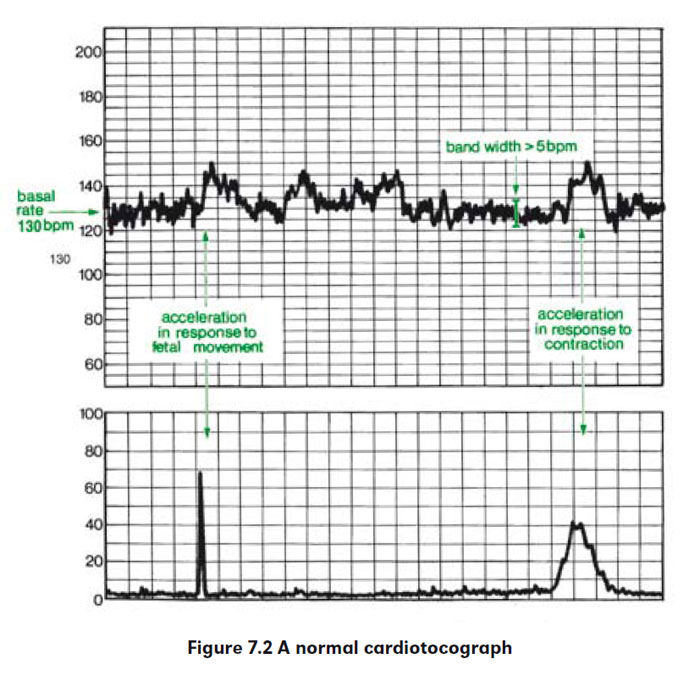Monitoring of the Fetus
You will already have seen that there is documentation of the fetal heart on the partogram. Normally, with low risk pregnancies, this is with intermittent auscultation - every 15 minutes in the 1st stage of labour but every 5 mins in the 2nd stage and taken after a contraction. With higher risk pregnancies continuous monitoring with CTG is performed. Here is a picture of a normal CTG reading.

Decelerations
When a contraction happens there is intermittent reduction of blood supply to the placenta. This will cause acceleration of the fetal heart. Fetal movement will also cause acceleration. Deceleration of the fetal heart during or after a contraction may indicate fetal stress (sometimes called "distress" - we try not to use this term now, especially in front of the parents) and a compromised fetus will have less reserve and will be more likely to get stressed, ultimately becoming hypoxic and acidotic.
There are various types of decelerations.

The fetal heart monitor will alert us to potential fetal problems but how the liquor looks can also be a pointer to fetal compromise e.g. the presence of meconium. For these babies, where there is concern, taking a fetal blood sample (FBS, from the fetal scalp through a specialised speculum placed into the vagina) will enable measurement of pH and lactate and is the gold standard for determining the condition of the fetus. Here is some information about the fetal heart rate and the changes along with an acronym to remind you of all the things to be looking out for.
| Baseline- 110-160 bpm Variability- 5-25 bpm Accelerations- rise 15bpm for 15secs Decelerations- fall in FHR from baseline (described related to uterine activity) Contraction pattern | DR C BRAVADO DR - Define Risk C - Contractions BR - Baseline rate A - Accelerations VA - VAriability D - Decelerations O - Overall impression |
If you would like some more detailed information regarding fetal surveillance have a look at perinatology.com



